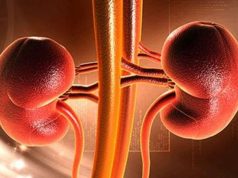Likelihood of developing adult HTN, MetS, LVH increased for children reclassified with 2017 guidelines
MONDAY, April 22, 2019 (HealthDay News) — Children reclassified to higher blood pressure categories based on 2017 pediatric hypertension definitions are at increased risk for developing adverse cardiometabolic outcomes, according to a study published online April 22 in Hypertension.
Tingting Du, from Huazhong University of Science and Technology in Wuhan, China, and colleagues compared the consequences of the 2017 and 2004 pediatric hypertension definitions and examined their performance in predicting adult hypertension, metabolic syndrome, and left ventricular hypertrophy (LVH). Data were included for 3,940 children with 36-year follow-up since childhood.
The researchers identified hypertension as defined in the 2004 and 2017 guidelines in 7 and 11 percent of children, respectively. Similar associations were seen with adulthood hypertension, metabolic syndrome, and LVH. There was an increase in the proportion of children identified as having hypertension who developed adult LVH, from 12 to 19 percent when defined by the 2004 and 2017 guidelines, respectively. The 8 percent of children who were reclassified by the 2017 guidelines to higher blood pressure categories were more likely to develop hypertension, metabolic syndrome, and LVH in later life, while similar cardiometabolic outcomes were seen for the 1 percent who were reclassified to lower blood pressure categories and their propensity score-matched normotensive counterparts.
“We demonstrated that the 2017 guidelines increased hypertension prevalence as a result of reclassification to higher BP categories,” the authors write.
Abstract/Full Text (subscription or payment may be required)
Copyright © 2019 HealthDay. All rights reserved.








